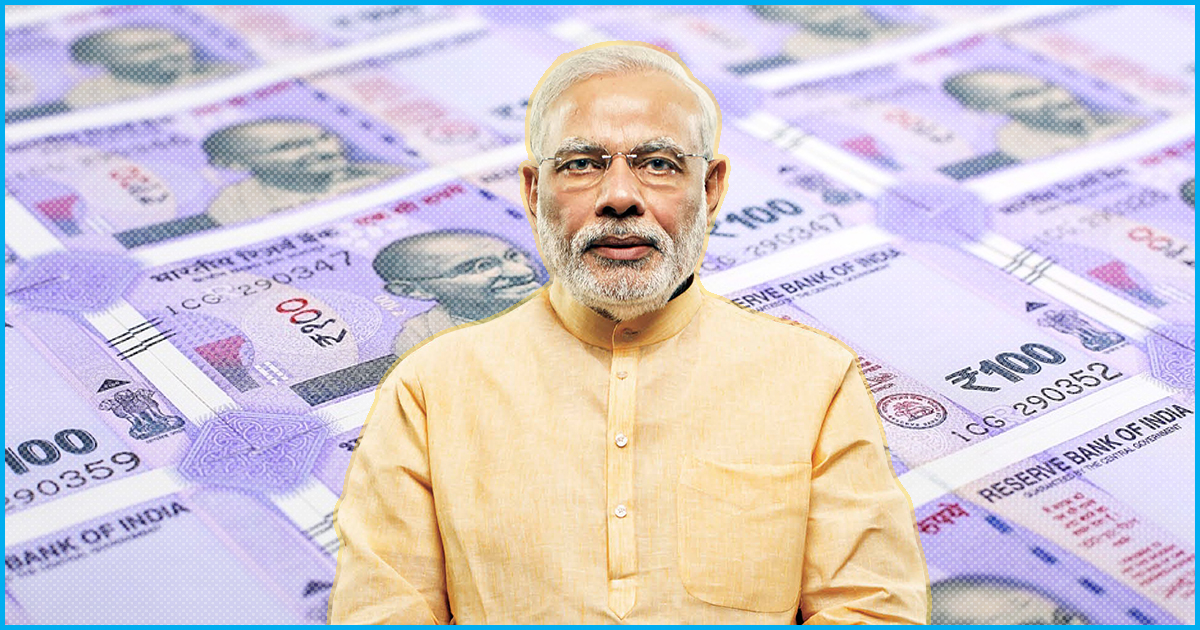On the eve of November 8, Prime Minister Modi in an “unprecedented move” announced demonetisation, banning notes of Rs 1000 and Rs 500, which constituted 86 per cent of Indian currency. The NDA-led government called the move necessary and claimed that it would help the country by destroying the black money and counterfeit note in circulation. Recently former Chief Economic Advisor (CEA) Arvind Subramanian in his book, while condemning the move said that demonetisation was a “massive, draconian, monetary shock”. He said that this move caused the downfall in economic growth to 6.8%.
According to the Scroll, Subramanian, who quit from his post earlier this year, broke his silence on the Modi Government’s mid-night stroke. In his upcoming book, “Of Counsel: The Challenges of the Modi-Jaitley Economy”, Subramanian says that the informal sector had to suffer a substantial cost due to the ban on the Rs 1000 and Rs 500 notes.
However, he chose to remain silent on whether he was consulted in the decision-making process before demonetisation or not. However, has pointed out that the Prime Minister had not consulted the CEA before banning the currency.
The book which is going to release on December 5, has a chapter dedicated to demonetisation. In the chapter, “The Two Puzzles of Demonetisation – Political and Economic”, Subramanian writes, “The real Gross Domestic Product growth was affected by the demonetisation. Growth had been slowing even before, but after demonetisation, the slide accelerated.”
Other factors that affected the growth
He said that in the six quarters before demonetisation, the growth average was 8%. However, in the seven quarters after demonetisation, the growth average was about 6.8%.
Further, the former CEA says that it is undisputed fact that the demonetisation slowed the growth. He says that the bigger discussion was that by how much per cent the growth was slowed, whether it was slowed by 2 per cent or less than that.
Elaborating on the several factors of that would have lead to decline, he said that many other factors affected growth in that period, especially higher real interest rates, GST implementation and oil prices.
“…But when a shock like demonetisation occurs, that primarily affects the informal sector, relying on formal indicators to measure overall activity will overstate GDP,” he said, as reported by the News18. However, he did mention that the demonetisation might have helped people move towards the electronics means from cash transactions.
Demonetisation not good in “normal times”
Calling demonitisation an “unprecedented move”, he also said that no country had carried out such a move in “normal times”. He said that even if it were to be carried out, it could have been gradual. He further said that such sudden demonetisation would have been justified in emergencies like war, hyperinflation, currency crises or political turmoil.
Further, he said that due to demonetisation the poor had to face severe damage. He says for poor the move could be seen as “unavoidable collateral damage”. After the move, the poor in the country were willing to overlook their damage and hardship hoping that the step would counter corruption as it was promised and they believed that the rich got more affected by it, he said.
New currency In danger
In the past two years, the BJP government has maintained that demonetisation was a successful exercise even when there were multiple reports pointing out it didn’t achieve its purpose. Now, there are reports that claim that even the new currency notes Rs 500 and Rs 2000 that were issued after demonetisation, are becoming ‘unusable’ in just two-years of circulation.
Reportedly, this is happening because of the poor quality of new notes. According to some sources, the paper that is being used for printing of these notes is of low quality in comparison with the earlier notes.
If the currency becomes “unusable” it might lead to a huge problem for the people who use ATM for money transfer. As unusable currency cannot be used in ATMs as they can’t detect the bad quality notes, as reported by The National Herald.
According to the Hindi daily, Amar Ujala, the problem of ‘unusable’ currency is so intense that not just the Rs 2,000 and Rs 500 notes, but also the new Rs 10 notes, which were issued in 2018 are also becoming ‘unusable’.
PM calls Note ban “bitter medicine”
At the recent rally in Jhabua, Madhya Pradesh, PM Modi. He claimed that he has used the “bitter medicine” of demonetisation to bring back money into the banking system and to give “proper treatment to deep-rooted corruption system” in the country. The Modi government had also claimed that after the note ban the counterfeit note in circulation would vanish.
However, according to the figures put by Reserve Bank of India in its annual report for 2017-2018, there has been a sharp rise in the counterfeits of the new currency notes of Rs 500 and Rs 2,000. The report says that counterfeits in the new currency notes of Rs 500 notes rose to 9,892 pieces from just 199 pieces a year ago. For the Rs 2,000 notes, the counterfeit rose to 17,929 pieces in 2017-18 from just 638 pieces a year ago, as reported by National Herald.
Also Read: 99.3% Of Demonetised Currency Back In System: RBI Report











